Oktoberfest Munich 17 Best Things To Know Before You Go
Updated July 2022
“Doing” Oktoberfest in Munich seems to be on nearly every traveler’s bucket list. But it wasn’t on our list until the spring of 2018. The hubby and I were feeling unsettled about our upcoming fall vacation. So we pivoted and, on the fly, decided to see if we could get to Oktoberfest. If you are planning to go to Munich Oktoberfest for the first time, here’s what you should know before you go.
This article may contain affiliate links. We may earn a commission if you use these links to buy products or services. Please see our disclosure policy for full details. Thanks.
What is Oktoberfest?
Back in 1810, Crown Prince Ludwig (Kronprinz), who later became King Ludwig I of Bavaria, married Princess Therese of Saxe-Hildburghausen on October 12. All the citizens of Munich were invited to attend the festivities. The event was held on the large fields in front of the city gates and was soon renamed “Theresienwiese” (Theresa’s Meadow ) to honor the princess. This was the first Oktoberfest!
The remnants of the City gates still stand, and on the open space now known by locals as “the Wiesn,” Munich hosts the largest beer festival in the world and the biggest Oktoberfest celebration!
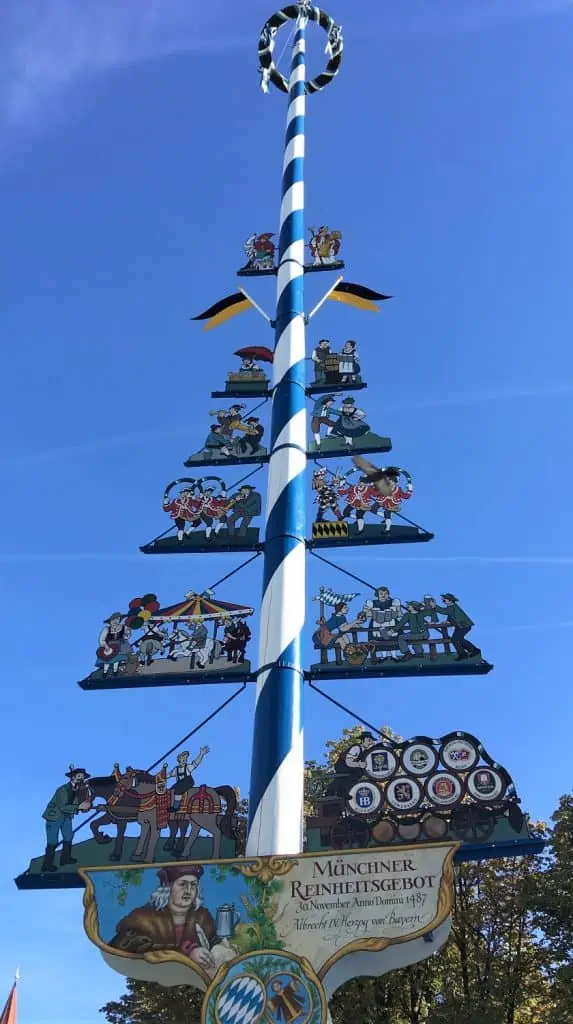
What started as a wedding celebration has transformed into a 17 or 18-day festival celebrating all things beer and Bavarian. The original festival of Oktoberfest is sponsored by the City of Munich and the breweries in Bavaria. The breweries follow the “Reinheitsgebot” (purity order), which limits the ingredients that can be in the beer. These regulations have been in effect for over 500 years
Yes, there is more to this annual festival than beer drinking, but really, this is why so many come. Every year nearly 7 million people from around the world consume more than 6 million liters of Bavarian beer. Oktoberfest is now the world’s largest Volksfest (largest Folk Festival).
One important thing to know before you go is that Oktoberfest starts in late September, opening on the second to last Saturday in September. At noon the mayor of Munich taps the first barrel in the Schottenhamel Tent, shouting out, “O’zapft is” (It’s open), and the party begins.
The festival runs through the first Sunday in October and now must include October 3, German Reunification Day. So if October 3 is a Tuesday, like it will be in 2023, the fair will continue through that day.
How to get to Oktoberfest
Most people coming from inside of Europe take the train to Munich. If you are from North America, going to Europe on holiday (vacation), and plan to use the trains, you should purchase a Eurail pass before you leave. Trains in all of Europe are a quick, efficient, and less expensive way to travel.
We were in Europe already, having flown from Oakland, California, to Oslo, Norway, using an inexpensive airfare we were fortunate to find on Norwegian Air. This gave us a chance for a fun three-day layover in Oslo before flying down to Munich. Once at Munich airport, we took the train into town.
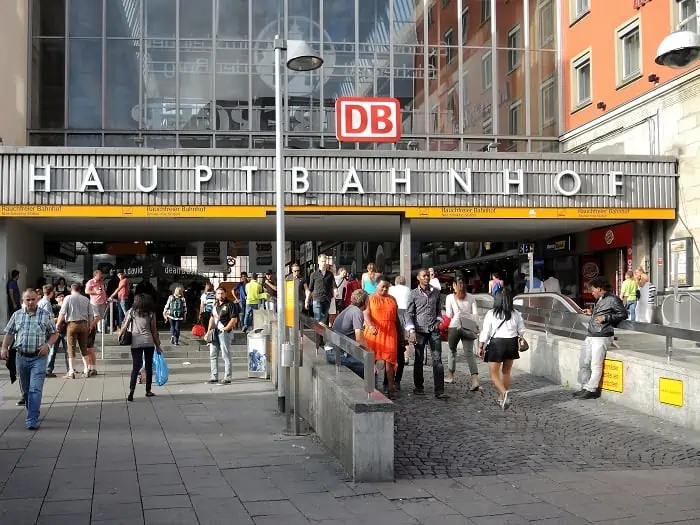
The festival takes place on the Theresienwiese, which used to be outside the City in the 1800s but is now smack dab in the middle. If you are coming to Munich on the train, you can easily walk from the central railway station (Hauptbahnhof).
In Munich, you can get accommodations close enough to the festival grounds to walk. There are many hotels, Airbnb, and other accommodations in the area.
If your hotel is not within walking distance of the Wiesn, public transportation is the best way to get around. You can take the U-Bahn on either the U4 or U5 line. The nearest U-Bahn stop to the festival is Theresienwiese. When you step off the U-Bahn, just follow the crowds to the festival. Everyone’s going there, you can’t miss it!
You can download an app for your phone that will help you set up journies on public transit.
Booking Accommodations For Oktoberfest
Hotel rooms are expensive during the Oktoberfest season (upwards of 400 euros a night). As with most things at Oktoberfest, the earlier you book your room, the better. Staying right next to the festival is nice, but it isn’t the most important thing.
We booked a room at the Arthotel Munich. You can usually find the best deals at Booking.com! This hotel is only a few short blocks from the Wiesn and near the train station. That sounded great to us, as the hotel was easy to get to and from. Again, as first-time Oktoberfest goers, there was a lot we didn’t know.
What we didn’t know was that the hotel sits on the most popular route from the train station to the festival. All day and all night, huge crowds of festival-goers were parading back and forth in front of the hotel. Some were quite rowdy. Good thing we had a room at the back of the hotel.
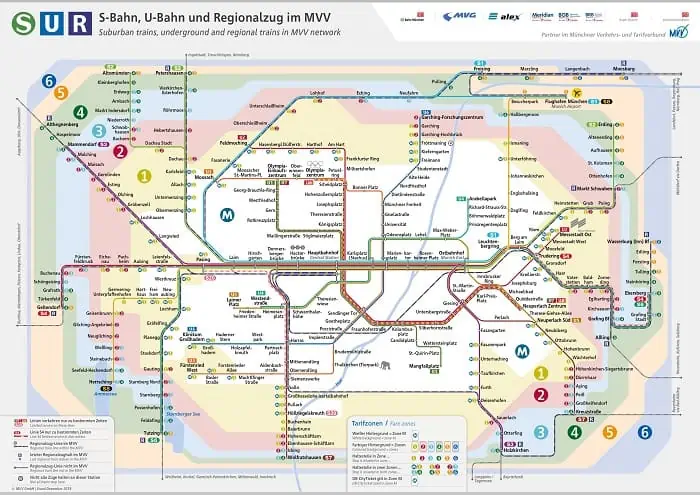
You can book a room further away and still quickly get to Oktoberfest. Just take a look at the public transit map of Munich and book a place close to a U-Bahn station on the U4 or U5 line. This way, you’re well connected to the Oktoberfest grounds and can get home quickly.
What to Expect at the Festival
First off, it’s essential to know before you go that the weekends at Oktoberfest are the busiest. After all, that is when Germans are off work. Oktoberfest may bring in a lot of tourists, but over 85% of the attendees are German!
The first weekend, Saturday in particular, when the Mayor of Munich taps that first keg, there are already 10s of thousands of people at the “Wiesn.” To get a seat in one of the main tents for this event, you need to arrive very early, around 8:00 am.
The second “Middle” weekend is unofficially “Italian Weekend.” With Italy’s close proximity, Oktoberfest has become a popular long weekend getaway for young Italians looking for a good party. We were told that Italy actually sends “police” to Munich to assist the local force in keeping the crowds in line. Italian Police at Oktoberfest may be an urban myth, but you never know. This middle weekend is the craziest time to be at the festival.
Closing Weekend – German Reunification Day – Germans from around the country come to Munich for Oktoberfest to celebrate their national holiday.
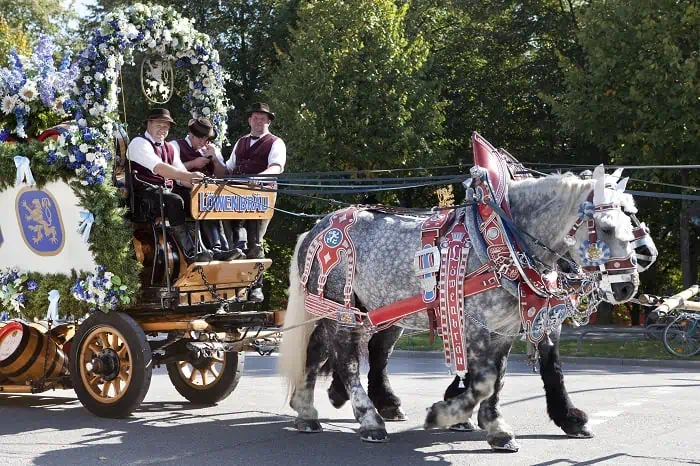
Midweek is Less Crowded
There are far fewer tourists and people in general midweek, and you can quickly get into a tent. We chose to go to the Wiesn midweek for this very reason. Being new to Oktoberfest and knowing its reputation as a giant beer party, we wanted to experience the day with a lighter crowd. We knew if we loved it, we could come back for more.
There is Security All Around the Wiesn
There is only one entrance and exit to the festival, and there is a “security check” to enter. Large bags or backpacks are not allowed at Oktoberfest. But I would recommend not even bringing a bag; there is no place to sit your bag down that isn’t dirty.
Women can get by with a small purse. Even better, be creative like I was, and have zippered pockets sewn into your dirndl. Pockets will give you plenty of space for your phone, ID, cash, comb, and lip balm. Men can do the same by making use of those lederhosen pockets.
While there isn’t much crime at the festival, there are still those who take advantage of crowds. Pickpockets are around, and this is why I recommend having zippered pockets.
The security at Oktoberfest is on the lookout for those folks who will inevitably get very drunk. They do not hesitate to throw out people for bad behavior, including getting violent, verbally abusive, or just drunkenly belligerent.
They’ve Got an App For That
Yes, indeed, there is an App for Oktoberfest. The app will keep you up to date on the latest news and information on the festival. There is a site plan that will show you where you are and where the nearest facilities are. The Live Barometer gives you an idea of how full each tent is. And most important, the app has the full program of all the offerings at Oktoberfest.
How Much Does Oktoberfest Cost?
We were curious about Oktoberfest tickets – how much they cost and where to get them. Happily, we found it doesn’t cost anything to get into Oktoberfest; there’s no such thing as an entry or cover fee. But don’t assume this means you won’t be spending money.
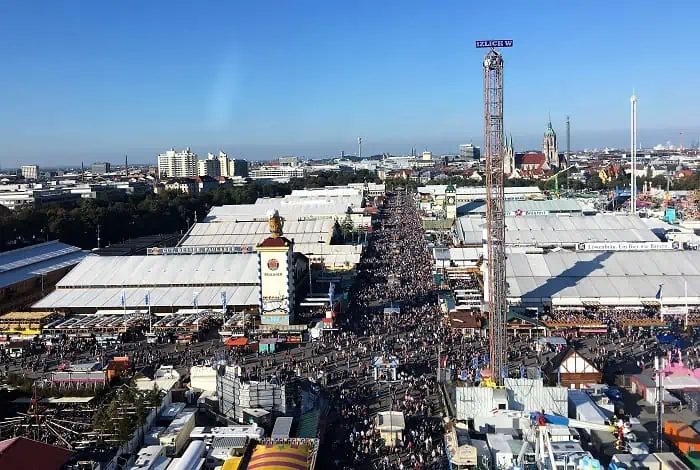
There are 14 big tents at the Theresienwiese grounds, all sponsored by one of six local breweries. Späten, Augustiner, Paulaner, Hacker-Poschorr, Hofbräu, and Löwenbräu. Of the 14 tents, there are six large tents, which can hold up to 12,000 people!
These tents are not what most of us envision when we hear the word tent. Until Oktoberfest, I’d never seen a tent that could hold 10,000 plus people. These are big spaces. However, it would be best if you still were prepared to get cozy with your neighbor. They really pack the people in!
Do You Need a Reservation For Oktoberfest?
Technically, no, you do not have to make a reservation. Tents are free all day, every day, and all have open as well as reserved tables. However, if you want to drink in a tent, you must be seated at a table.
To make a reservation for a tent, you need to contact the tent sponsor directly via email or phone. Reservations need to be made at the start of the year between January and April. You should probably be on the phone in January; the tables at the best tents fill up quickly.
Table reservations are free; however, a reservation requires you to order food and drink. The typical food order is usually the equivalent of two big beers and half a roast chicken and costs around 30 EUR per person. By the way, a serving of beer is a “Maß” (1-liter beer steins). There are many liters of beer consumed during Oktoberfest.
If you don’t want to drink that much German beer, you can also order a Radler, this half beer, and half lemonade. A table for ten will be about 300 EUR, depending on the tent. The food you are served is traditional German food, made fresh on-site in the tent!
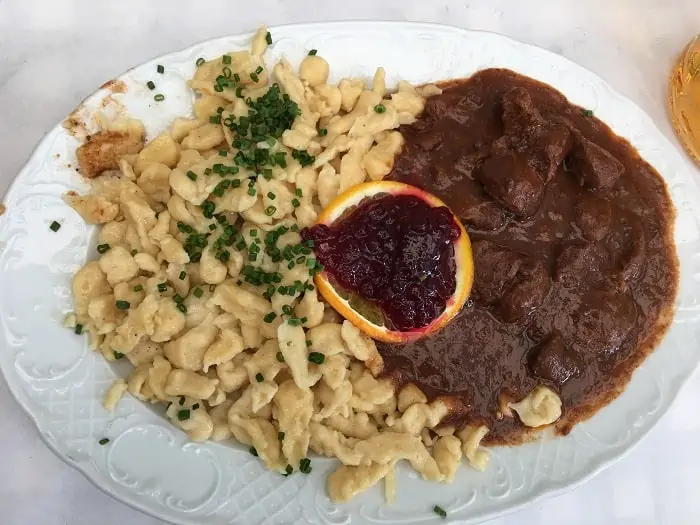
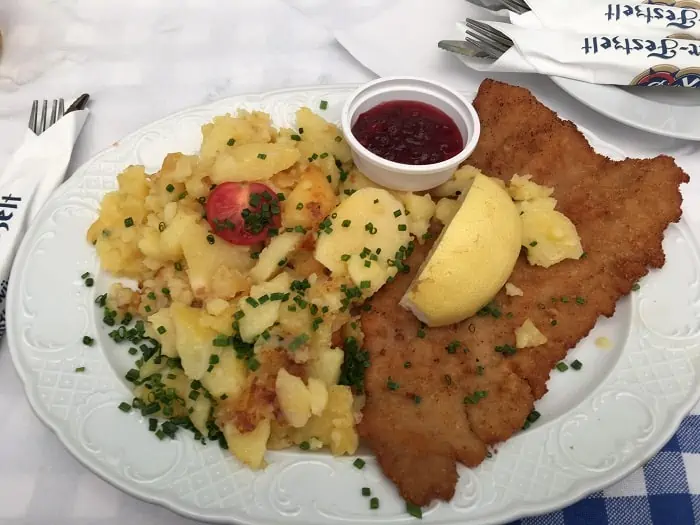
Also, you’re required to book a whole table, so even if it’s just you going at the moment, you reserve the table as though you are going to fill it.
Back to the Tents – They Are Not All The Same
On the face of it, you might think that all tents give you the same Oktoberfest experience. However, every Oktoberfest different tents have different unique characteristics. Because we were late to the party, so to speak, and needed a sponsor, we didn’t get to choose a tent.
As luck would have it, we got a fantastic tent, Hacker-Festhalle. This tent’s ceiling is a blue sky and white clouds. There is a banner in the “sky” that reads “Hacker-Pschorr – Himmel – Der Bayern.” Roughly the saying translates to Hacker-Pschorr (the brewery) Heaven in Bavaria. Hacker-Festhalle is one of the more popular tents.
The Hofbrau tent is the most well-known among tourists. Because of this, it is rarely visited by the locals, and you will find yourself hanging out with well… tourists.
Every tent has a “reputation.” Some are better for families, some are very traditional, and some are quite contemporary. Do your research beforehand, and if you can, chat with some locals to get a feel for what tent is best for you.
What Happens Inside the Oktoberfest Tents?
Look at these photos; as you see, there are thousands of people eating and drinking. In the center is the “bandstand.” Here traditional live music is played pretty much all day. In front of the bandstand is a small dance floor.
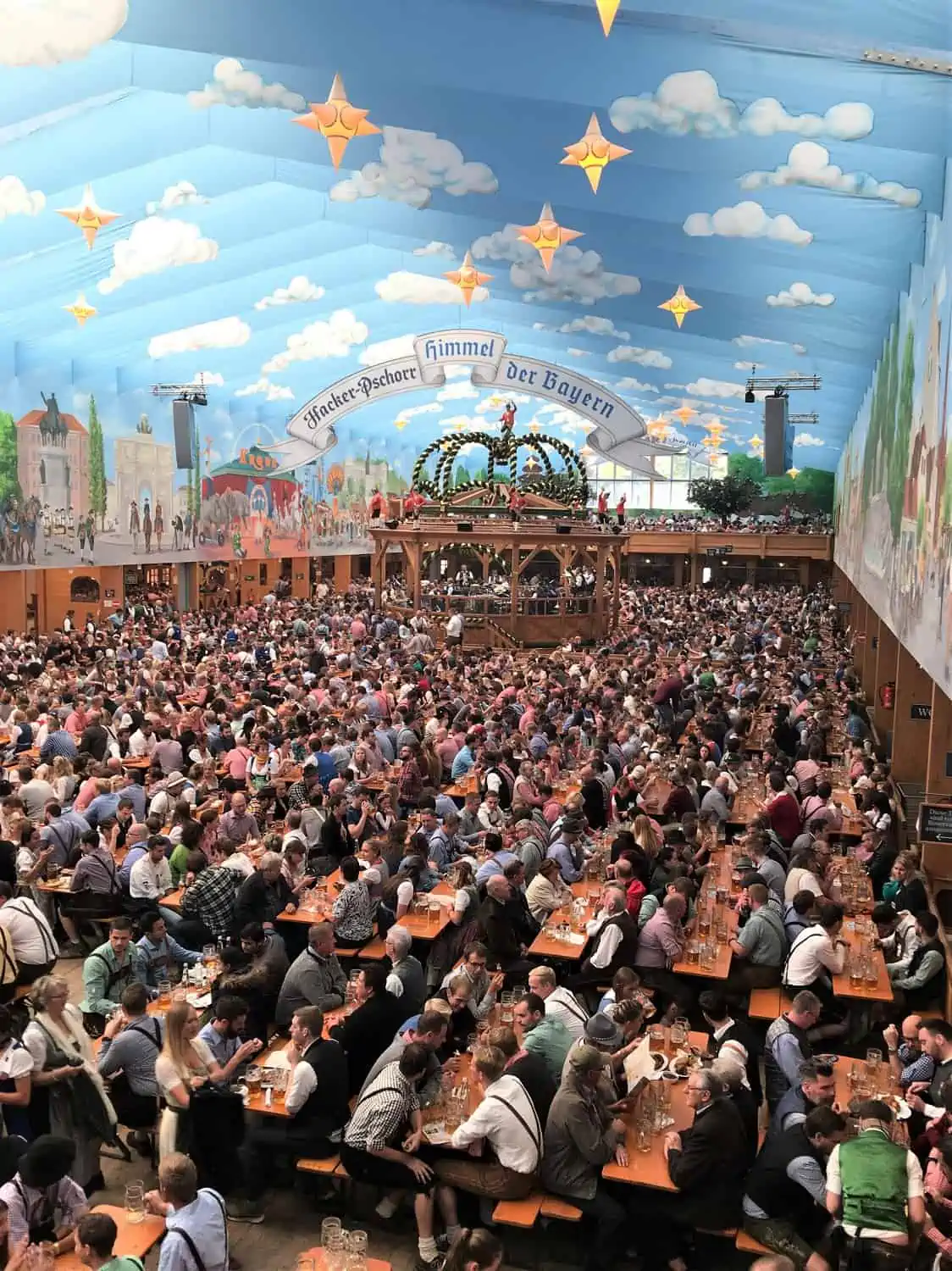
These are my photos. Remember earlier I mentioned we chose to go to the festival on a weekday (specifically a Thursday) in the afternoon. The tent is not full; there are few open spaces. We were not at the festival at night, when everyone said the crowds are huge!
One Big Sing-Along
In between eating and drinking, don’t be surprised to find the whole crowd all of a sudden singing. Crazy as this sounds, two of the most common songs are “Sweet Caroline” and “Country Roads.” I don’t know why they sing these songs, likely, because both are well-known world-wide and easy to sing.
Also, there is the popular tune “Ein Prosit” (rough translation “A Toast”). Every time you hear Ein Prosit (which is often), you are expected to sing along, yell Prost, and take a sip of your drink.
Ein Prosit is an easy song, but unless you are German, you probably don’t know the words. I’m giving them to you here so you won’t look foolish just sitting there with your beer.
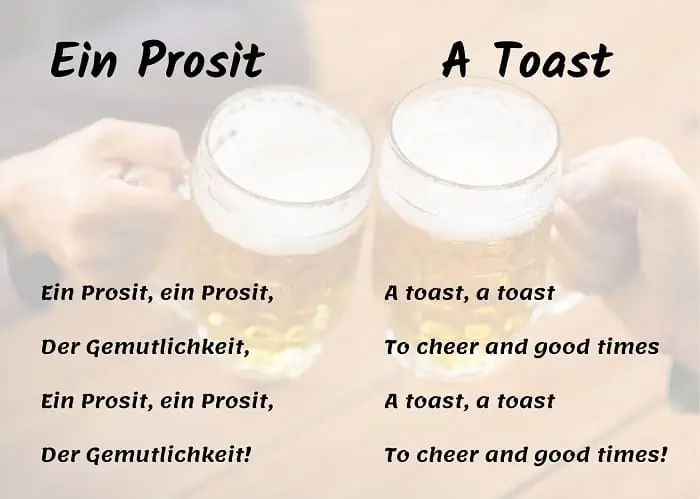
But Don’t Sing Standing on Your Table
Often when “Ein Prosit” is sung, you will find a party-goer standing on his bench chugging his entire beer. Standing on your bench for dancing is ok. But know before you go that standing on your bench, chugging your beer is frowned upon.
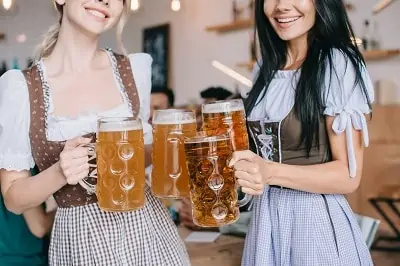
Don’t do it unless you are planning to leave the tent. You will be allowed to finish your beer, but as soon as you are done, you will be escorted out of the tent by a couple of large gentlemen in plain blue shirts (security).
Most everyone is aware that they will be asked to leave the tent if they participate in this behavior. One of our tablemates explained to us that this is a sort of grand gesture. As long as the bench-standing beer drinker isn’t too drunk, it is just a showy way of leaving the tent.
Attire – Do You Have to Wear a Dirndl or Lederhosen?
Dirndls and lederhosen (“trachten”) aren’t “Oktoberfest costumes”; they are the traditional outfits Bavarian wear! We chose to buy our outfits before hitting Munich. I wanted to be sure my dirndl fit properly, and my husband was quite curious about the lederhosen.
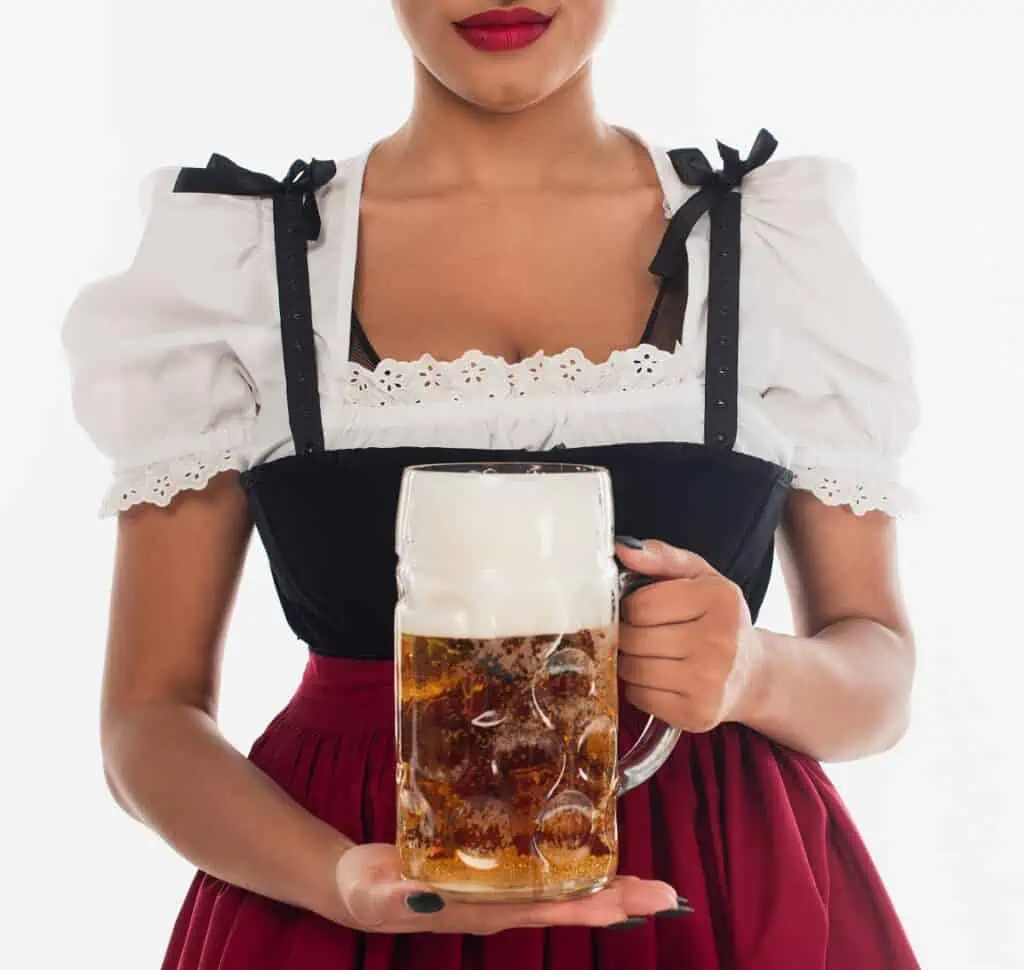
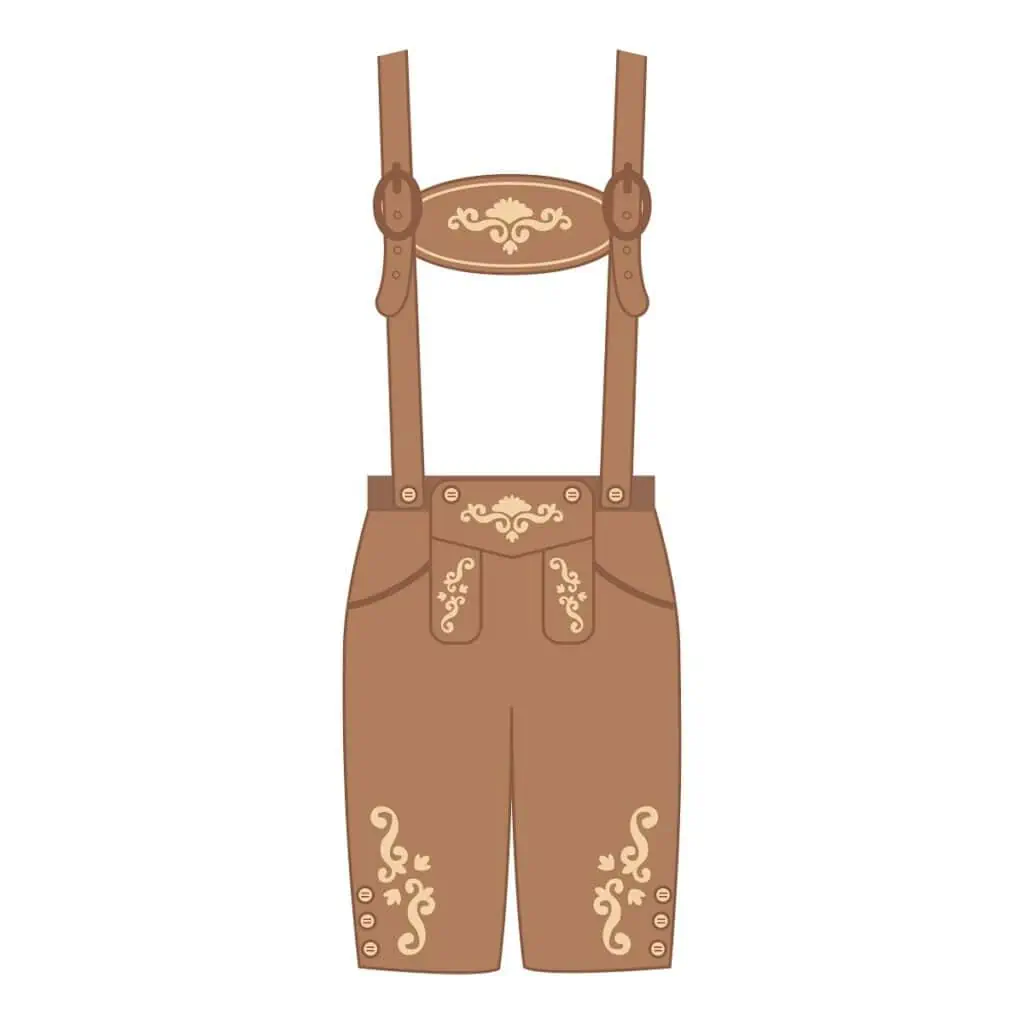
However, there are plenty of shops around Munich that will happily sell you traditional Bavarian clothing.” And you should get yourself outfitted traditionally before going to the festival. Nearly everyone you see will wear traditional dirndls and lederhosen so that you won’t feel out of place or uncomfortable. If you are wearing typical tourist clothes, you will stand out.
For women, it is essential to know where to tie the bow for the apron on their dirndl. Where the bow is tied indicates your marital status. A bow on the right side says the wearer is “taken.” Conversely, if the bow is on the left, the lady is single.
A bow in the middle front traditionally meant that the wearer was a virgin. However, recently women are using this bow to say none of your business!”
The final is a bow tied in the middle of the back which means either that the wearer is a waitress or a widow; make your guess carefully!
Lastly, don’t make a mockery of Bavaria’s trachten by wearing really short, scandalous dirndls or pajama-like lederhosen knock-offs. It’s better to wear regular clothes than to be cartoonish.
What Else Can You Do At Oktoberfest?
In general, the focus at Oktoberfest is drinking, eating, frolicking, and singing. It is this tradition, atmosphere, and spectacle that makes it so unique. But Oktoberfest is also the world’s largest folk festival!
There is a full-on festival going on in addition to the beer tents. There are all sorts of food stalls, amusement rides, fair games, maker’s tents, and more. This is what Germans call a Volksfest, a big event that combines some kind of beer/wine festival with a funfair. Be sure to spend some soberish time exploring the festival grounds.
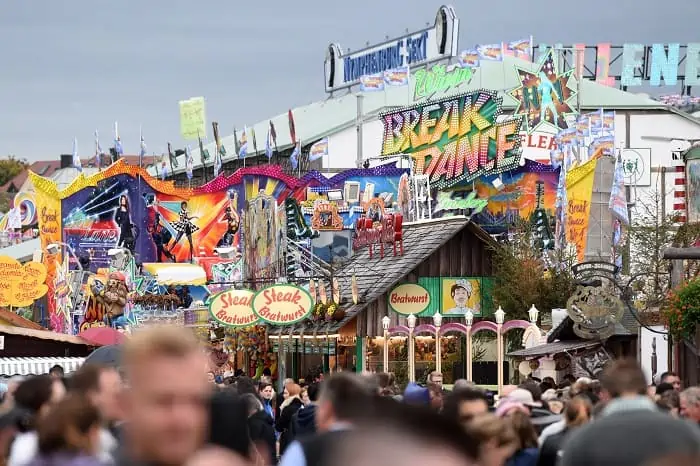
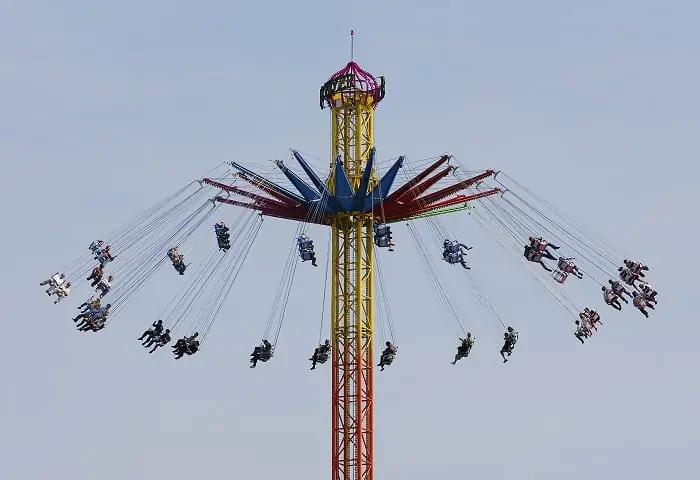
When weather permits, you can more easily find seats in a beer garden outside of the tents; there are many to choose from. The downside is you won’t hear the band, just the sounds of the fair, loud happy people.
If your visit to Oktoberfest is on opening weekend, you can enjoy the Costume and Riflemen’s Parade. This parade has over 7,000 costumed performers and musicians, thoroughbred horses, oxen, and associated farmyard animals walking through the center of Munich to celebrate Oktoberfest’s opening weekend. If the weather holds, an open-air concert featuring 400 musicians also takes place.
Cost of Rides, Food, and Drink Outside the Tents
You can buy alcohol outside the tents (just not beer). At last look, the average alcoholic drink costs around 8€. Soft drinks are available, including the famous “Apfelsaftschorle,” which is carbonated water and apple juice.
There are stands everywhere with sausage and wurst for 4€. Many stalls offer sweets that are typical of what you see at fairs, cotton candy, lollipops, cookies, and other pastries.
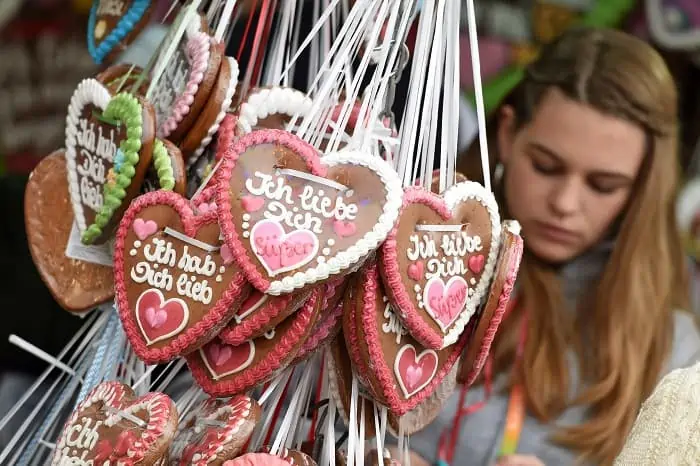
Unique to Oktoberfest are these gingerbread hearts. It’s common for young men to give one of these hearts to a young woman he fancies. We picked up a bunch of these to bring home as gifts.
Bring Cash to Oktoberfest
Last but not least, bring cash. Most shops and stalls at Oktoberfest do not accept credit cards. Cash machines are on-site, but the lines are long, and you get charged a lot of extra fees. So you should bring cash.
How much money you need to bring depends on how much you intend to eat and drink. Even while on a budget, it is easy to spend 50€ a day, or more, for food, drinks, and some rides for just one person.
Don’t forget to bring coins with you for the washroom! The bathroom attendants at Oktoberfest are the unsung heroes of the festival. You’ll notice there’s a plate in the bathroom, and this is where your tip should go. Be kind and tip: 1€ is not unusual. A clean functioning bathroom is a fantastic find when you’ve been drinking beer all afternoon.
Should You Go to Oktoberfest?
Yes, Oktoberfest is an event everyone should go to at least once. Fall is a fantastic time to visit Munich, and having this great festival taking place at the same time is remarkable.
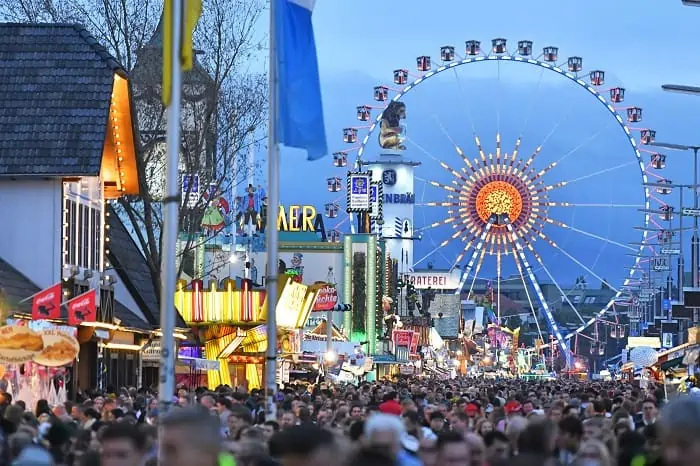
After spending time at Oktoberfest, you can use Munich as a hub to visit more of Bavaria. It’s easy to take a day trip to Salzburg, Austria, or any number of other fascinating locations from the train station.
Oktoberfest is one of the best festivals I’ve been to. Go see for yourself; you’ll have a blast!
FAQ’s
Are There Oktoberfest Celebrations Outside Of Munich?
Yes indeed! Although Oktoberfest began as a Bavarian Holiday, its popularity has spread. You can now find “Oktoberfest celebrations” throughout Germany. But also in places like Oktoberfest Blumenau, in Brazil, the Denver Oktoberfest in the United States, Oktoberfest Brisbane in Australia, and even Qingdao, China
Other Things to Do In Munich Outside of The Festival
While you are in Munich, spend some time getting to know the city. Hire a guide and take a walking tour to visit such sites as Marienplatz and the old town. You can also easily take a day trip to Salzburg or visit Dachau Concentration Camp just 10 miles outside of the City.

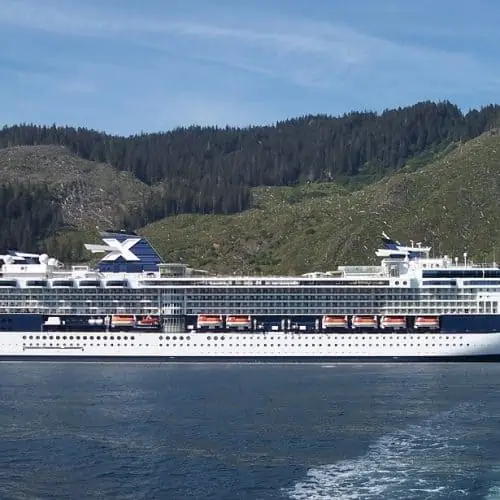
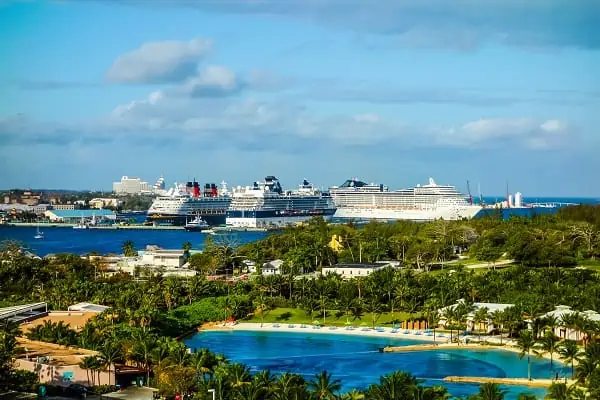

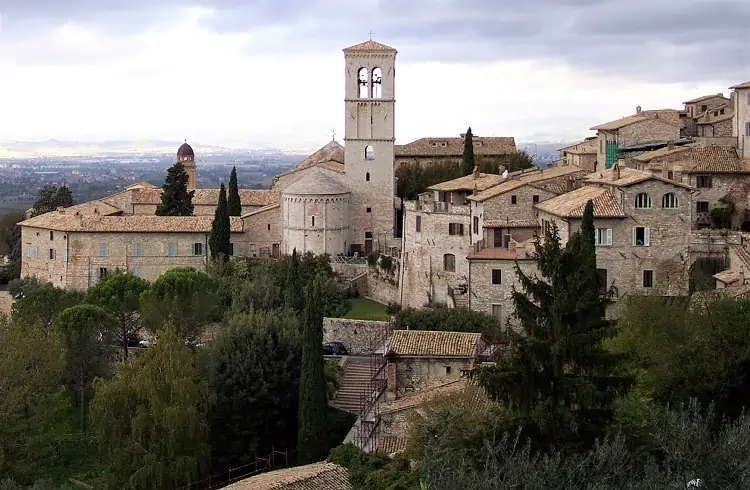


2 Comments